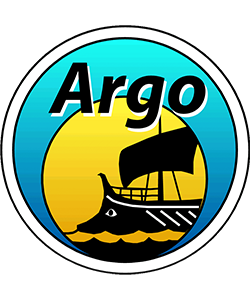As the use of profiling floats increases and their data become more complex, the Argo Program must balance the benefits of improved coverage with the increased complexity and difficulty of documenting, managing and distributing Argo data. After official notification prior to deployment, an ‘Argo float’ produces freely available, real-time quality controlled data within 24 hours. The data is further quality controlled and assembled into a long-term archive for use in critical scientific analysis. As a result, it is necessary to develop guidelines for floats and sensors that can be submitted to the Argo Data Stream.
The Argo Program has been supported by the Intergovernmental Oceanographic Commission (IOC) to provide a high quality, global data set for tracking variations on seasonal to inter-annual time and 1000 km space scales while respecting its member state’s territorial rights. While national programs and DACs (Data Assembly Centers) must use their judgement to accept a float into the Argo data stream, the Argo Steering Team and Argo Data Management Team have provided this framework to assist them in making their determination.
The float guidelines page describes the three stages in more detail.
These tables describe all the guidelines and requirements in detail.
To maximize the use of the Argo Array and provide the necessary high-quality data needed for climate research, a float included in Argo:
- must follow the Argo governance rules for pre-deployment notification and timely data delivery of both real-time and delayed-mode quality controlled data
- must have a clear plan for long term data stewardship through a national Argo Data Assembly Centre
- should target the Core Argo profiling depth and cycle time, 2000 m and 10 days, respectively. However, data that contributes to the estimation of the state of the ocean on the scales of the Core Argo Program are also desirable
Development of new sensors
The Argo Program encourages the appropriate development of new and improved sensors for presently accepted parameters, and of new sensors that measure climate related parameters. Sometimes the most effective way to do this is by adding experimental sensors on floats that also contribute to Argo. Since ALL measurements from an Argo float must be made publicly available, including experimental ones, it is not practical to incorporate all new sensor data into the Argo NetCDF formatted data. In order to manage the progress of sensors from experimental to fully approved, Argo considers sensors and parameters to be in one of three stages:
- Stage I: Experimental deployments
- Stage II: Global Argo Pilot
- Stage III: Global Implementation
Stage I: Experimental deployments
This stage includes a very small number of floats (less than 10) and sensors can either be on an Argo float with the data from these experimental sensors only included in auxiliary files, or outside of Argo on a research float. If it is on an Argo float, all approved sensor data must be distributed through the Argo data system in the usual manner. The only approved sensor for Core Argo is the SBE41 operating to 2000db. The ADMT maintains a list of approved Biogeochemical Argo sensors. To satisfy the Argo requirement that all measurements are transparent and available to the public and to minimize the burden on the Argo Data Management Team, the float owner must decode experimental data from non-approved sensors and send it to DACs for distribution through the Auxiliary directory.
Stage II: Global Argo Pilot
This stage is reached with approval from the Argo Steering Team and should include ~100 floats with the experimental sensor. Approval is met based on criteria like technological readiness, compelling global design, major benefits to society and a solid implementation plan. The pilot stage data will be distributed through the main Argo data system with appropriate quality control flags to minimize the impact on users. The Argo general guidelines need to be met and all the meta, tech and profile variables must be defined and well documented at this stage. The approved variables are described in an excel sheet and in the Argo User’s Manual. There are four approved for Core Argo (temperature, salinity, pressure and conductivity) and six approved for BGC Argo (oxygen, chlorophyl, BBP, nitrate, pH and irradiance). The excel spreadsheet contains all the parameters, including intermediate ones. To find the approved ocean state variables, look in the ‘core/bio/intermediate/ column for ‘c’ and ‘b’ variables. Currently, there are three Global Argo Pilot sensors for Core Argo: the SBE41 below 2000db, the SBE61 and the RBR CTDs.
Stage III: Global Implementation
This stage is reached after sensor readiness and benefit is presented to both the IOC Executive Council and the Argo Steering Team for approval. The sensor should be on ~1000 floats or more and data will be distributed through the main Argo data system. The Argo general and data quality and management guidelines must also be met.
